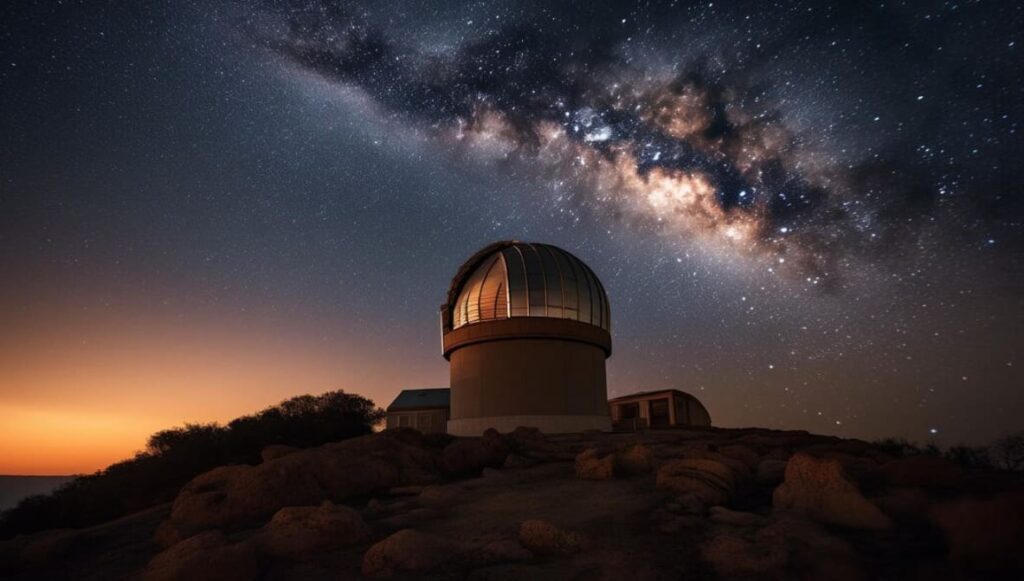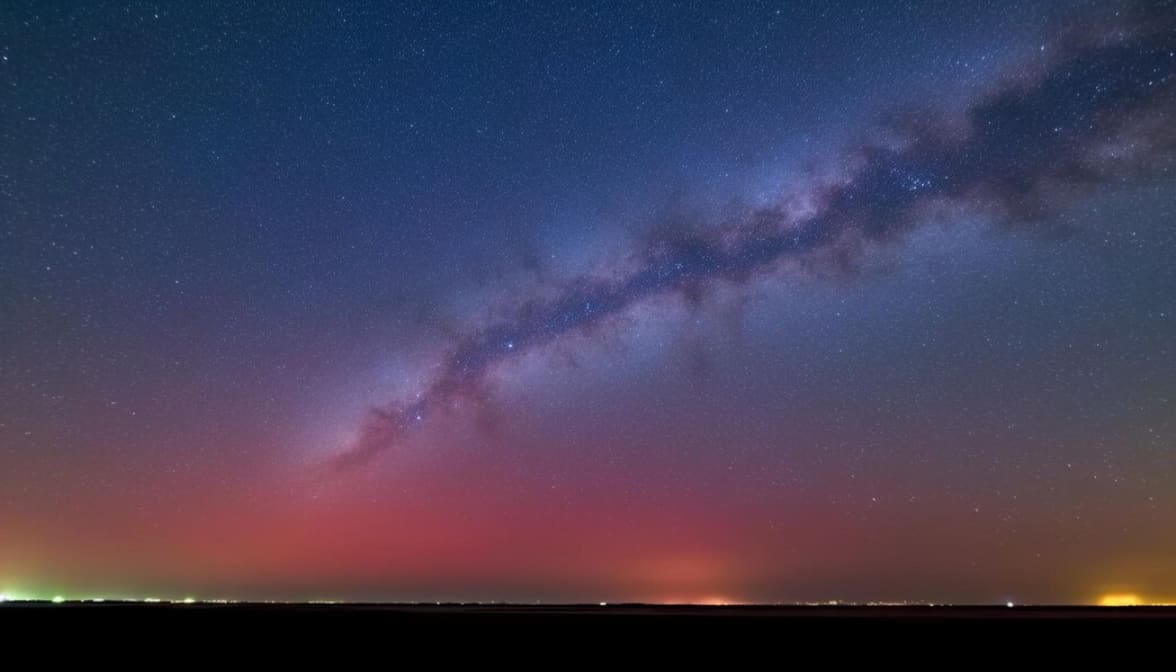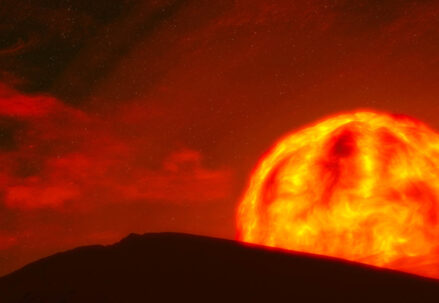The cosmos has always been a fascinating field of study, encapsulating various spheres of knowledge like astrophysics, astronomy, and cosmology. Exploring the distinctions between astrophysics and astronomy sets a perfect stage to delve into the fascinating facts about interstellar phenomena and the mysteries they hold.
Let’s take a closer look at these disciplines, understand their differences and complicate their interconnectedness.
The Scope and Significance of Astrophysics
Astrophysics extends beyond traditional astronomy by applying the laws of physics and chemistry to probe the intrinsic properties of celestial entities, rather than merely charting their location or movement across the cosmos.
This scientific discipline leverages the foundational tenets of physics to explore a vast array of cosmic phenomena, including the life cycles of stars, the complex behaviors of galaxies, the mysteries of exoplanets, the intricate patterns of intergalactic substances, and the relic radiation from the Big Bang, known as the cosmic microwave background. The electromagnetic spectrum serves as a vital key for unlocking the secrets of the universe, providing astrophysicists with a window into the mechanics and composition of astral bodies. The exploration of enigmatic concepts like dark energy, dark matter, and the ripples in spacetime known as gravitational waves also falls within the realm of astrophysics. Delve into pivotal discoveries and groundbreaking events that have reshaped our understanding of the universe through the lens of astrophysics.
Chronological Highlights in Astrophysics
Astrophysics has undergone a remarkable evolution, marked by a series of pivotal discoveries that have elevated it to a cornerstone of the scientific community. Here, we explore ten monumental events that propelled astrophysics forward, molding it into the robust field of study we recognize today.
Revelation of the Solar Spectrum’s Secrets (1802 and 1814)
The journey of astrophysics was sparked by the observations of Sir William Wollaston and Joseph Fraunhofer when they identified mysterious dark lines within the Sun’s spectrum. These lines, now known as Fraunhofer Lines, were found when sunlight, passed through a prism, displayed not just a continuous rainbow but also featured numerous dark lines. These absorption lines are due to elements like calcium, sodium, magnesium, and iron, which, though minor compared to hydrogen, the Sun’s primary component, absorb light at specific wavelengths creating these dark spectral signatures. Further discussions on their implications would be reserved for future discourse.

A New System of Stellar Classification by Pickering and Colleagues (1885)
- In 1885, Edward Pickering and his team, which notably included astronomers Annie Jump Cannon and Antonia Maury, undertook the colossal task of categorizing 400,000 stars;
- They devised a classification system based on spectral characteristics, segregating stars into seven primary types.
This system, known as the Harvard Classification Scheme, revolutionized astrophysics and remains a fundamental tool within the field, highlighting once more the critical role of spectroscopy in cosmic studies.
Eddington’s Insight into Stellar Energy (1920s)
- Around the 1920s, the origin of stellar energy was an enigma;
- Arthur Eddington, drawing on Einstein’s principle of mass-energy equivalence, proposed that stars generate energy through the fusion of hydrogen into helium at their cores;
- His seminal work, “The Internal Constitution Of Stars,” laid out this groundbreaking hypothesis, providing a theoretical framework for stellar energy production.
Cecilia Payne’s Doctoral Breakthrough (1925)
Cecilia Payne’s doctoral thesis was celebrated by her peers as one of the most significant contributions to astrophysics. She posited that hydrogen and helium are the predominant elements within stars, a hypothesis that underpinned the modern understanding of stellar composition and set the stage for future research into stellar evolution.
Hubble’s Groundbreaking Discovery (1929)
- The broader understanding of our universe was significantly revised with Edwin Hubble’s seminal work;
- Before Hubble, the common belief was that our galaxy, the Milky Way, was the solitary galaxy in existence, with all other observed celestial phenomena being parts within it, such as the Andromeda galaxy and the Magellanic clouds;
- Hubble’s research dramatically shifted this view, establishing that the universe is teeming with galaxies beyond our own.
His formulation of Hubble’s Law, which posits that the velocity with which a galaxy moves away from us is directly proportional to its distance from us, provided incontrovertible evidence that the universe is in a state of expansion, opening up a new frontier in astrophysical thought and confirming that our universe is far more dynamic and vast than previously imagined.
The Genesis of Radio Astronomy and the Discovery of Cosmic Radio Waves (1932)
- The pioneering efforts of Karl Jansky in 1932 laid the groundwork for the field of radio astronomy;
- At Bell Telephone Laboratories, Jansky constructed an antenna to capture radio waves at a frequency of 20.5 MHz;
- Over several months, his recordings captured signals from multiple sources, which he categorized into three types: static from nearby thunderstorms, static from distant thunderstorms, and a faint, steady hiss of unknown origin.
After diligently monitoring this third type of static for over a year, he noticed that its maximum intensity rose and fell in a daily cycle, initially leading him to believe it was solar radiation. However, as the brightest point of the signal gradually diverged from the solar position and followed a sidereal day rather than a solar day, Jansky’s investigation concluded that the mysterious static was, in fact, radio emissions from our own Milky Way, with the strongest signals emanating from the direction of the galactic center, in Sagittarius. This discovery was the cornerstone of radio astronomy, which has since become a vital branch of astronomical research, particularly for studying high-energy entities such as quasars.
The Discovery of the First Black Hole (1971)
The theoretical foundations of black holes trace back to the implications of Einstein’s theory of general relativity, formulated in the early 20th century.
- Nevertheless, the first observational evidence suggesting the existence of these exotic objects emerged in 1971 from the constellation Cygnus;
- Home to Cygnus X-1, this constellation harbors one of the strongest X-ray sources observable from Earth, initially detected in 1964;
- In 1971, independent observations by astronomers at the National Radio Astronomy Observatory (NRAO) and Leiden Observatory detected radio emissions associated with Cygnus X-1, and precise positional measurements of these emissions linked the X-ray source to the star HDE 226868.
The star itself could not account for the intense X-rays being observed; thus, it was postulated that it must be accompanied by another body capable of superheating gas to the extreme temperatures required to produce such X-rays. Two years of meticulous analysis led astronomers to conclude that this companion was a black hole, making Cygnus X-1 a focal point of subsequent astronomical research and greatly enhancing our understanding of such mysterious cosmic phenomena.
The Breakthrough in Exoplanet Discovery (1992)
- Though hints of planets beyond our solar system surfaced as early as 1917, they remained unverified until a landmark discovery on January 9, 1992;
- Radio astronomers Aleksander Wolszczan and Dale Frail confirmed the existence of two planets orbiting the pulsar PSR 1257+12;
- This breakthrough initiated a cascade of discoveries, and as of early April 2020, over 4,200 exoplanets have been validated, enriching our catalog of diverse planetary systems;
- The identification of exoplanets has revolutionized planetary science and intensified the quest to find life beyond Earth.
The Advent of Gravitational Wave Astronomy (2016)
- The detection of gravitational waves in 2016 marked a pivotal moment in astrophysics, heralding the advent of gravitational wave astronomy;
- These ripples in the fabric of spacetime, produced by cataclysmic events such as the collision of black holes, had long eluded direct observation due to their subtle effects;
- The confirmation of their existence has provided a novel means to observe and understand the most violent and distant phenomena in the universe.
Imaging a Black Hole for the First Time (2019)
- On April 10, 2019, the Event Horizon Telescope collaboration achieved a historic feat by capturing the first image of a black hole, located in the M87 galaxy;
- This accomplishment, alongside the detection of gravitational waves, stands as a monumental achievement in modern astronomy, profoundly altering our visual and scientific grasp of these enigmatic entities;
- Ongoing research aims to enhance the clarity of such images and to extend the visual documentation of potential black holes with an expanded network of telescopes globally.
Astrophysics vs. Its Kin: Astronomy & Cosmology

Having explored the essence of astrophysics, it’s insightful to discern how it diverges from the related yet distinct disciplines of astronomy and cosmology.
Astronomy, one of the oldest sciences, is dedicated to the observation and understanding of celestial phenomena. It encompasses the study of the movement and positioning of celestial entities, such as the tracking of planetary orbits, timing of eclipses, and forecasting of meteor showers. The field traditionally employs principles of celestial mechanics and optics to determine the positions and occasionally the compositions of space objects.
Cosmology, on the other hand, embarks on a quest to comprehend the universe in its entirety. It delves into the grand narrative of the cosmos, from its inception to its evolution and eventual destiny. Cosmology transcends the study of individual celestial phenomena to embrace an examination of the universe at large.
These distinctions bring clarity to the interrelation and individual identities of astronomy, astrophysics, and cosmology within the broader tapestry of space sciences.
Conclusion
Astrophysics, along with its closely related disciplines of astronomy and cosmology, continues to unravel the universe’s numerous mysteries, allowing us to make sense of our cosmic surroundings. From defining celestial phenomena to identifying key cosmic events, these sciences constantly advance our knowledge about the universe, its origins, its evolution, and its future trajectory. As we look to the stars, the contributions of astrophysics and astronomy ensure that we continue to explore and grasp the wonders of the cosmos, driving our collective curiosity and desire to understand the universe that houses us.





